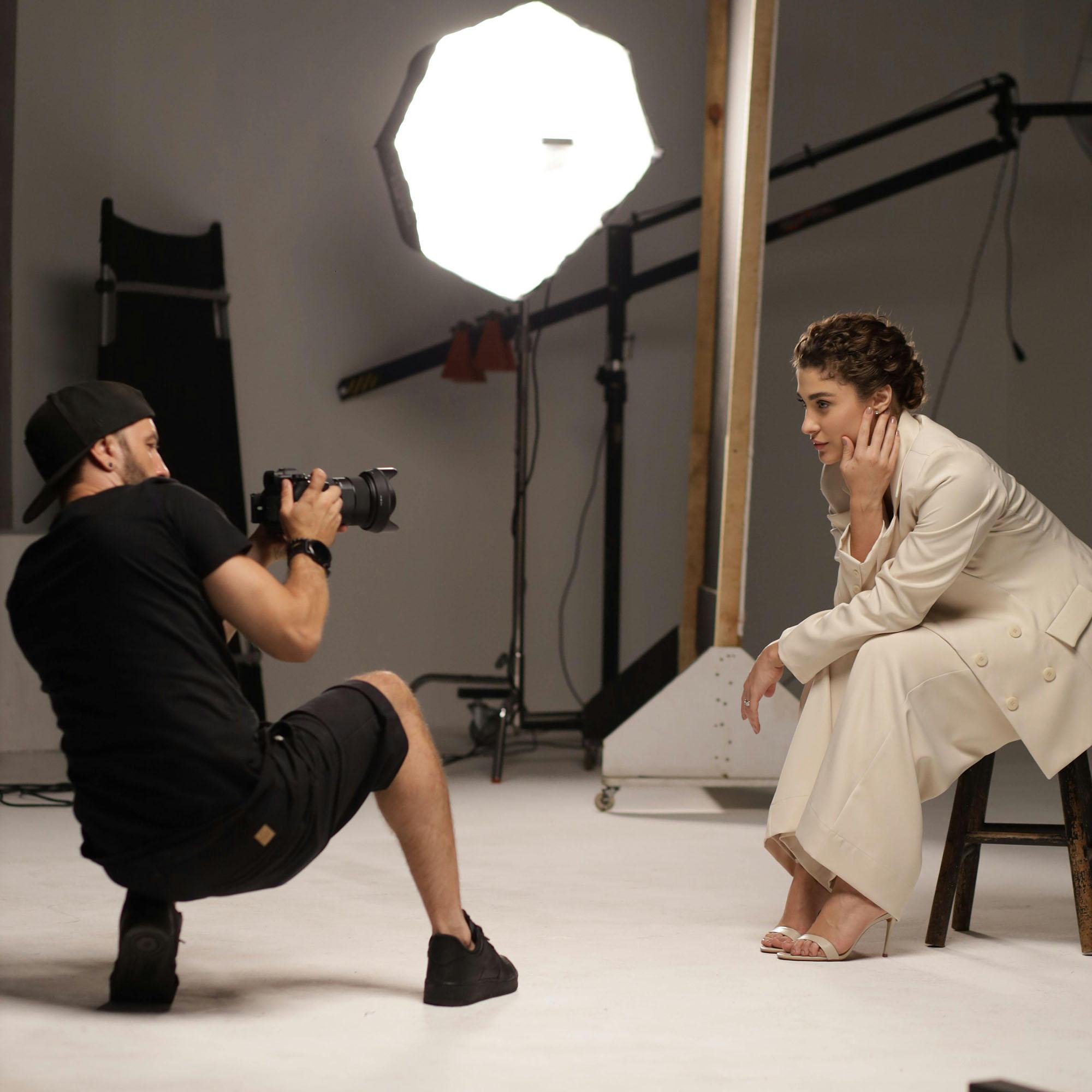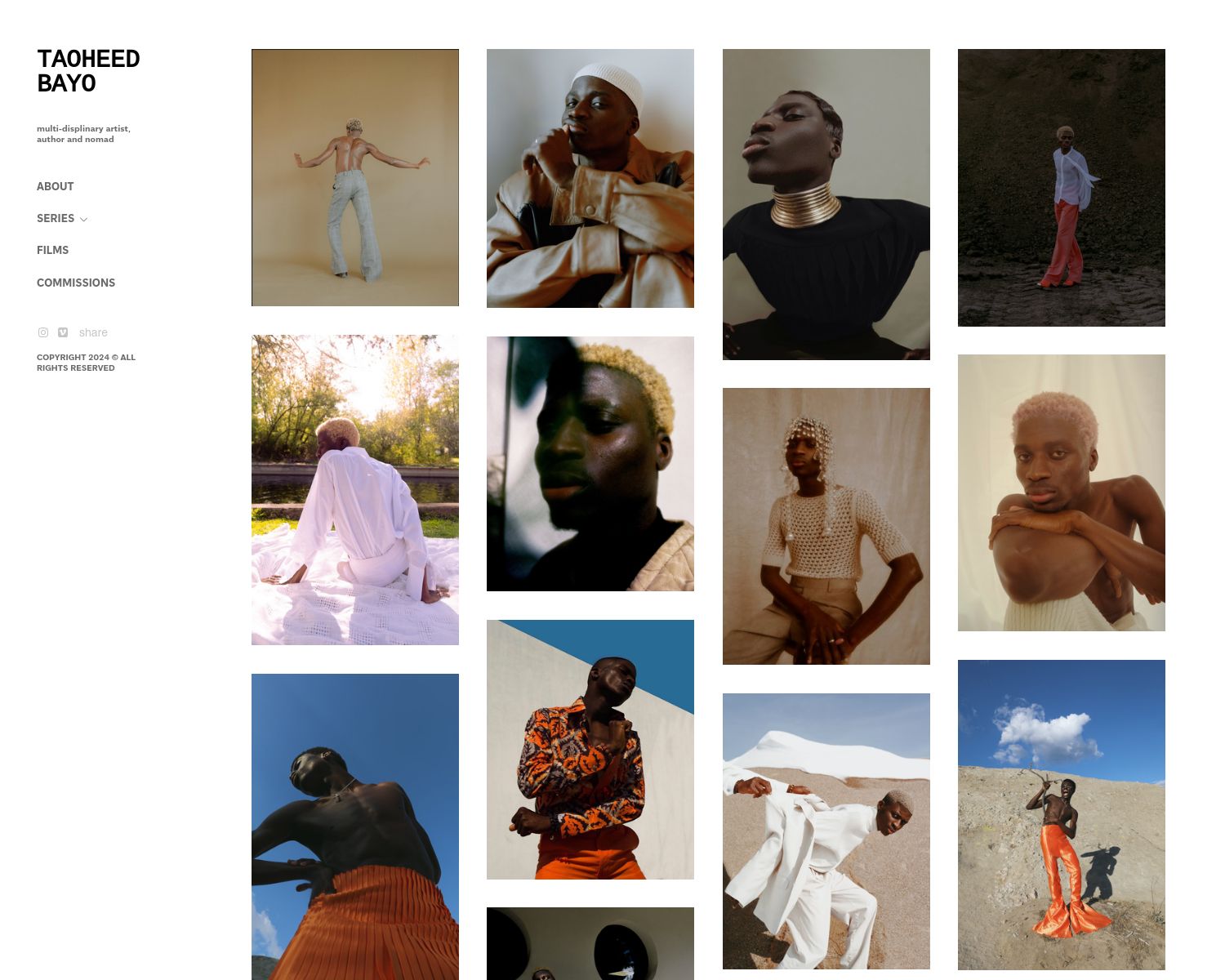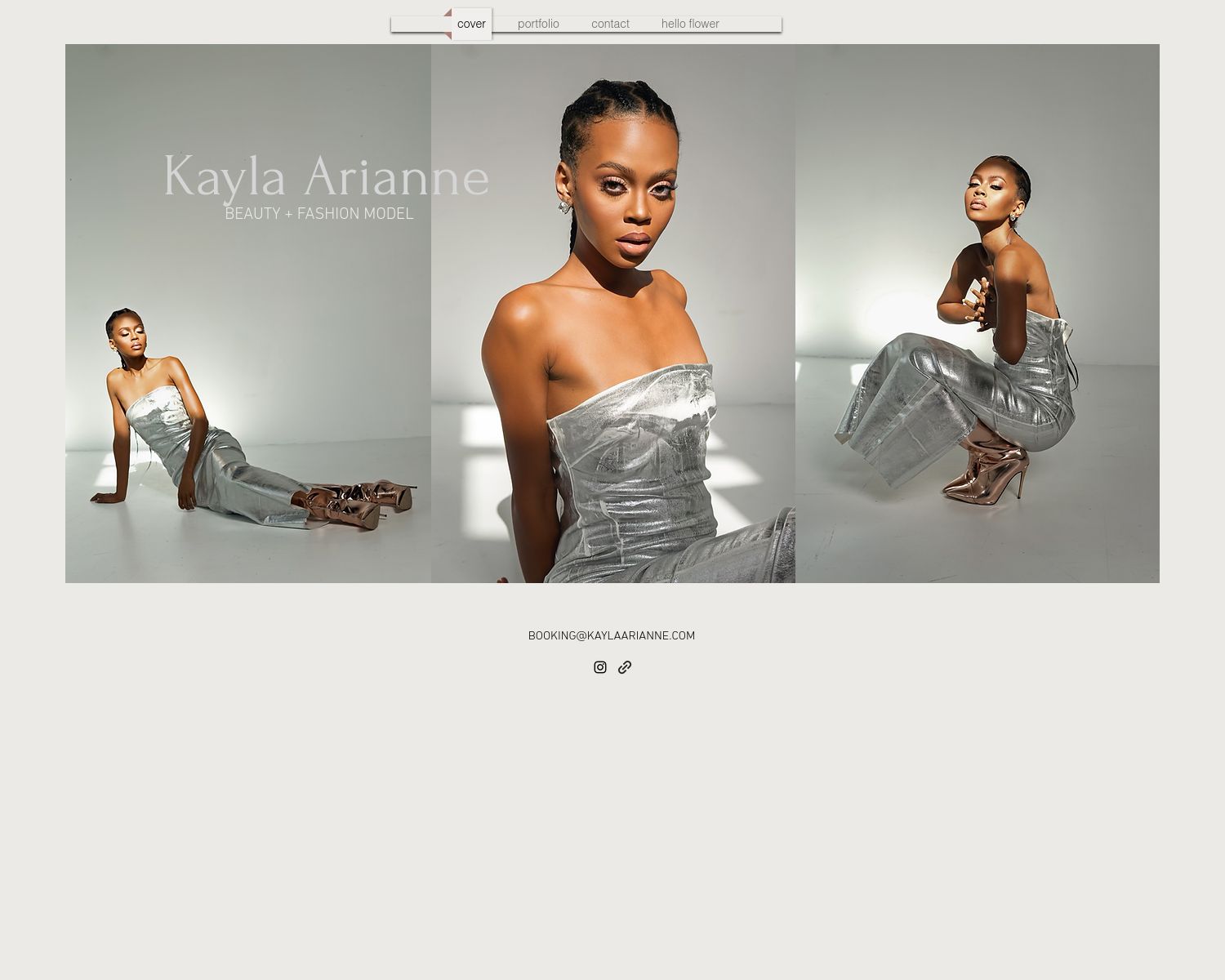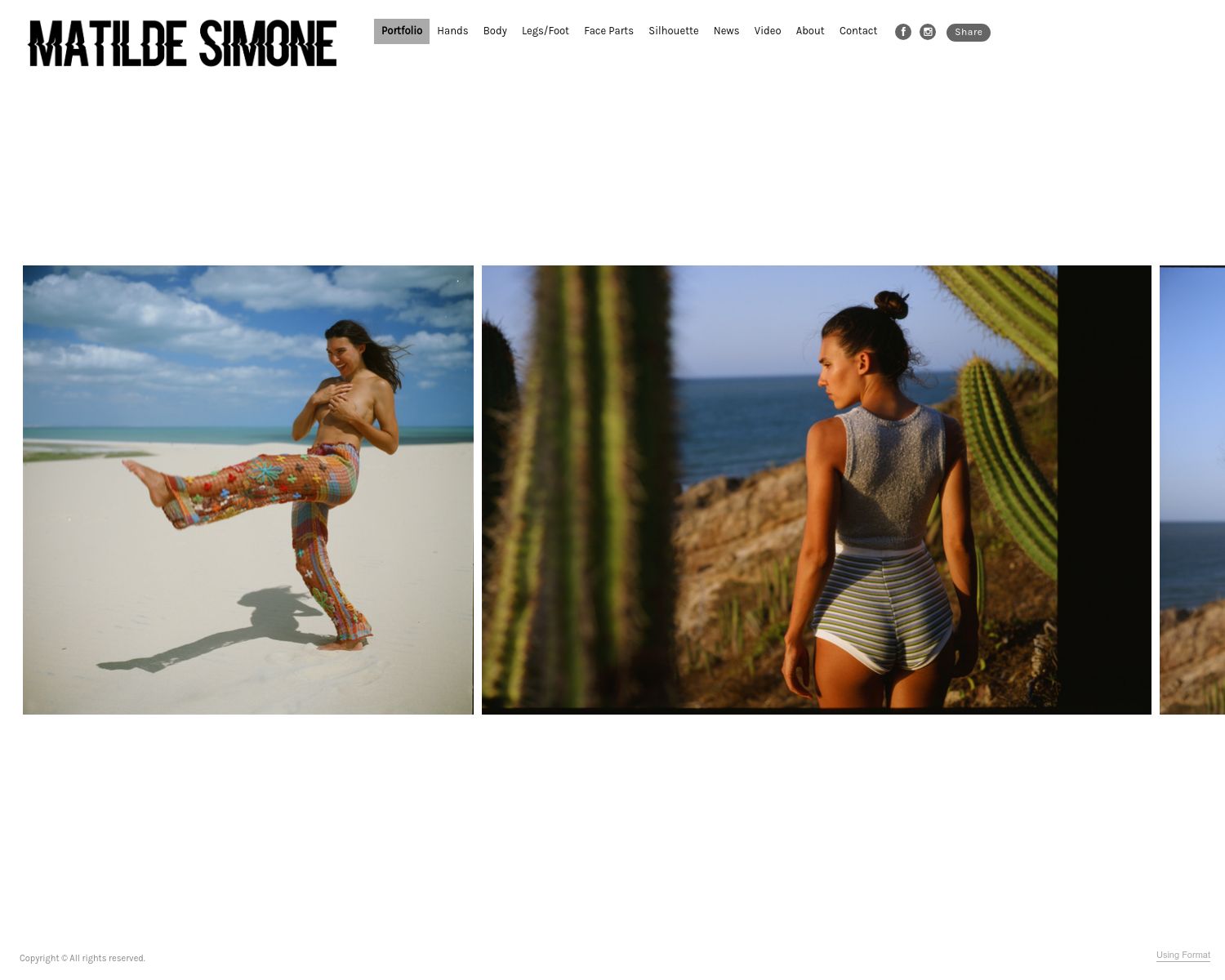
2024 Guide To Building Your First Modeling Portfolio (With Modeling Portfolio Examples)

Sam Hindman
Published onStarting a modeling career as a beginner can seem daunting. After all, the modeling industry is full of well-established names. But the good thing about this industry is that it isn't about being better than your competition---it's about being different. The best way to showcase your unique style to potential clients and agencies is through building a strong modeling portfolio.
When you're building your first model portfolio, it's easy to get lost in all of the available information out there. Some of it is incomplete, and some of it is very outdated. Today, we'll give you a fully comprehensive guide to building your own model portfolio in 2024, complete with what to include, how to build it, and plenty of model portfolio examples to give you a headstart.
Why Is Having A Modeling Portfolio So Important?
The reason why it's so critical for aspiring models to have a portfolio is because, above all else, it gives credibility to your modeling experience. Even a long-standing professional model working their hundredth runway show has some kind of portfolio that's presented to potential clients.
It's also convenient and gives off an air of professional presentation. It's a bit lackluster to send prospects for commercial modeling a Google File or your Instagram username. Having an online portfolio proves you're serious about modeling as a career, not just a hobby.
How To Find The Right Photographer For Your Portfolio Images
Before you can build anything, the first step is to make sure that you have high-quality images for your modeling portfolio. These portfolio pictures don't have to be insanely professional at first, so long as they're visually appealing and properly display your unique qualities.
To set up your first model photoshoot, you need to contact a professional photographer. Depending on your budget and connections, this can be done in various ways. Your modeling portfolio cost does not have to be out of budget when you start. In fact, there are a lot of photographers who are looking to connect with up-and-coming models to build their own portfolios.
Some of the best places to find local photographers to help you with your modeling portfolio are through other models you know, by looking through tagged photos that agencies are posting, or by searching through local Facebook groups dedicated to modeling and photography.
Some photographers are actually willing to provide you with high-quality images for your portfolio for free. When messaging them, offer them "TFP" or "trade for portfolio" requests. This essentially means that you have a symbiotic exchange---you get free images for your portfolio page, and they get free model photos for their social media and website. If this is the route you're taking, try to find photographers who match your modeling experience. Well-known artists are less likely to be willing to do an unpaid agreement.
Make Sure You Avoid Scams
It's worth noting that while you're on the hunt for photographers, you might encounter scam attempts. Make sure that you can verify the individual's name and business before agreeing to meet with them. And, especially if it's your first shoot, don't be afraid to bring a friend. Any photographer who's uncomfortable with this isn't one that you should be willing to risk working with.
Choosing What To Include In Your Professional Modeling Portfolio
Once you've had a few photoshoots under your belt, it's time to assemble the shots to create a cohesive, well-crafted portfolio website. Below, we'll go over must-have shots, along with some advice on what to include vs. what to omit.
Beauty Shots: Headshots That Highlight Facial Features
Purpose: Beauty shots focus on your facial features, showcasing your bone structure, skin tone, and expressions. These are important for model portfolios as they often serve as the first impression for potential clients and modeling agencies.
Tips: Make sure the headshots are taken by a professional fashion model photographer who can get excellent close-ups. Your makeup shouldn't be too out there; you want to capture your natural beauty!
Body Shots: Full Body Images Showcasing Your Physique and Posture
Purpose: Body shots provide a full view of your physique, posture, and proportions. They are very for commercial models and fashion models alike.
Tips: Wear form-fitting clothing that accentuates your body shape, but don't do or wear anything that makes you uncomfortable. Include both front and side poses to give a complete view of your physique.
How Many Photos Should I Include in my Modeling Portfolio?
Balancing the number of photos in your modeling portfolio is key to maintaining interest without overwhelming the viewer. A typical modeling portfolio should include 10-20 photos. This range allows you to showcase a variety of looks and styles without appearing redundant. In general, you want to focus on quality over quantity. As you grow and gain more experience, you can swap out the older shots for more current ones!
Modeling Portfolio Examples
Before moving on, let's take a look at some examples of other modeling portfolios out there. This can give you a solid baseline for your own model portfolio, as well as some ideas for how to structure a pleasing visual presentation.
Taoheed Bayo
Taoheed's modeling portfolio is a great example of how to add a diverse range of shots front and center. It's clear from the editorial shots he's included that he's familiar with many types of modeling, a versatility that is applauded by many in the fashion industry.
He has a large grid to the right side of his page, and to the left, there's a section dedicated to navigating through his site's other sections. Below, we'll discuss more thoroughly the kinds of additional sections you may want to include in your modeling portfolio.

Kayla Arianne
Some modeling portfolios give off an immediate aura of experience and sophistication, and Kayla's is certainly one of them. On her website, a collage of three gorgeous editorial shots opens her landing page. From there, you're presented with buttons directing you to her gallery, her contact information, and even her book, which has a dedicated tab.

Matilde Simone
Once your modeling career has progressed, you'll find yourself with more and more images worthy of being included in your portfolio. Matilde's website dealt with this issue (if you can call it that) very successfully. Her modeling portfolio is divided into parts of her body, from hand shots to silhouettes. It's a great example of how to categorize things easily to make them more simplistic to the user.

Choosing Where To Host Your Model Portfolio Website
Now that your content is prepared, it's time to decide where to put it. Your portfolio is a crucial tool to advance your modeling career, so you have to consider where to host it carefully. There are many options on the market for hosting portfolios, but you have to make sure you find a balance between easy building and personability. It's great to have a website builder with pre-planned options or designs, but you have to have an element of customization to really make it your own.
For instance, a website builder like Journo Portfolio lets you use features like pre-built templates or include your own HTML. This way, you can avoid a headache while still putting together a model portfolio that is perfectly your own.
What Should I Include In My Portfolio Website Besides Images?
While your photography portfolio is going to be the highlight of the website, it's also important to add a few more pages or elements to ensure that you're giving those who access it as convenient of a time as possible. After all, industry professionals and modeling agencies only have a few moments out of their day to dedicate to looking for talent - You don't want to risk them getting frustrated and losing interest!
Here are some things that you should absolutely include in your online modeling portfolio:
About Section: Ideally on a separate page of your model portfolio, you should have a section dedicated to (briefly) sharing your story. Talk about what makes up your unique style and how you stand out from other models. And, most importantly, talk about your drive and vision. This is the best way to develop a personal brand that resonates.
Contact Section: You can't forget about a contact section! After all, what are modeling agencies going to do if they're interested but can't find your email? This might seem like a no-brainer, but it's actually a commonly forgotten addition. Aspiring models should make sure that they're as accessible as possible so they can get the best opportunities!
Social Media Links: While social media alone isn't enough to get you booked, it could be a solid addition to your online portfolio. This is especially relevant if you consider yourself a content creator or have strong social analytics.
Getting your Modeling Portfolio Out There
The modeling industry isn't notoriously easy to break into. Even with a stellar portfolio website, you're still going to have to put in some work to advertise yourself and network. In fact, you'll come to find that self-promotion is one of the most valuable modeling skills there is. Here's how you can use social media, networking, and strategic submissions to get your model portfolio noticed.
Leverage Your Social Media
You should have dedicated accounts to your modeling, unless you want to use your personal profiles as a marketing space. Here are some easy tips for leveraging your social media to get your model portfolio noticed:
Consistency: Post regularly to keep your audience engaged. Use a mix of professional modeling portfolio photos, behind-the-scenes shots, and personal content to create a well-rounded profile.
Quality Content: Share some of the same images you use in your portfolio website. Make sure the ones that you choose to post are some of the best!
Engage with Followers: Respond to comments and messages to start building a following. Engaging with your audience can increase your visibility and attract more attention to your model portfolio website. Social media won't get you everywhere, but it's a great resource!
Network Often
You have to get yourself out there! Modeling is a very social career, and to be a name in the fashion world, you have to prioritize making connections. A professional portfolio might be your foot in the door, but you must also be certain you're meeting the right people.
Attend fashion shows, modeling conventions, and industry mixers whenever possible. These events are excellent opportunities to meet potential clients and industry professionals! Connect with people who can help you with your modeling jobs, too. This could mean stylists, makeup artists, or professional photographers.
Submit Your Portfolio to Modeling Agencies
Now, it's time for the big leagues. Get those research glasses out! Identify modeling agencies that align with your modeling type and aspirations. Look for agencies that represent models with similar attributes and styles. When you find one, make sure you do some digging.
Each agency has specific submission requirements. Make sure you follow their guidelines to the letter, including the format and type of images they request. If not, they may not even give you the time of day.
If agencies don't cut it, you have other options. Send your model portfolio directly to clients and casting directors who might be interested in your look. Include a brief introduction and a link to your online modeling portfolio. The most important part is to keep going, keep trying new things, and be prepared for a lot of rejection before finally finding that big yes!
Build Your Model Portfolio Website Today With Journo Portfolio!
Your modeling aspirations can only take you so far. The only way to fulfill your dreams is to take action. Luckily, you're only a few clicks away from getting started.
If you're ready to build your own model portfolio, Journo Portfolio is here to help. We make it easy for you to put together your model portfolio so that you can spend your time building, shooting, and paving the way to your success.



